-
"With lithography the technique of reproduction reached an essentially new stage." - Walter Benjamin, The Work of Art in the Age of Mechanical Reproduction, 1935.
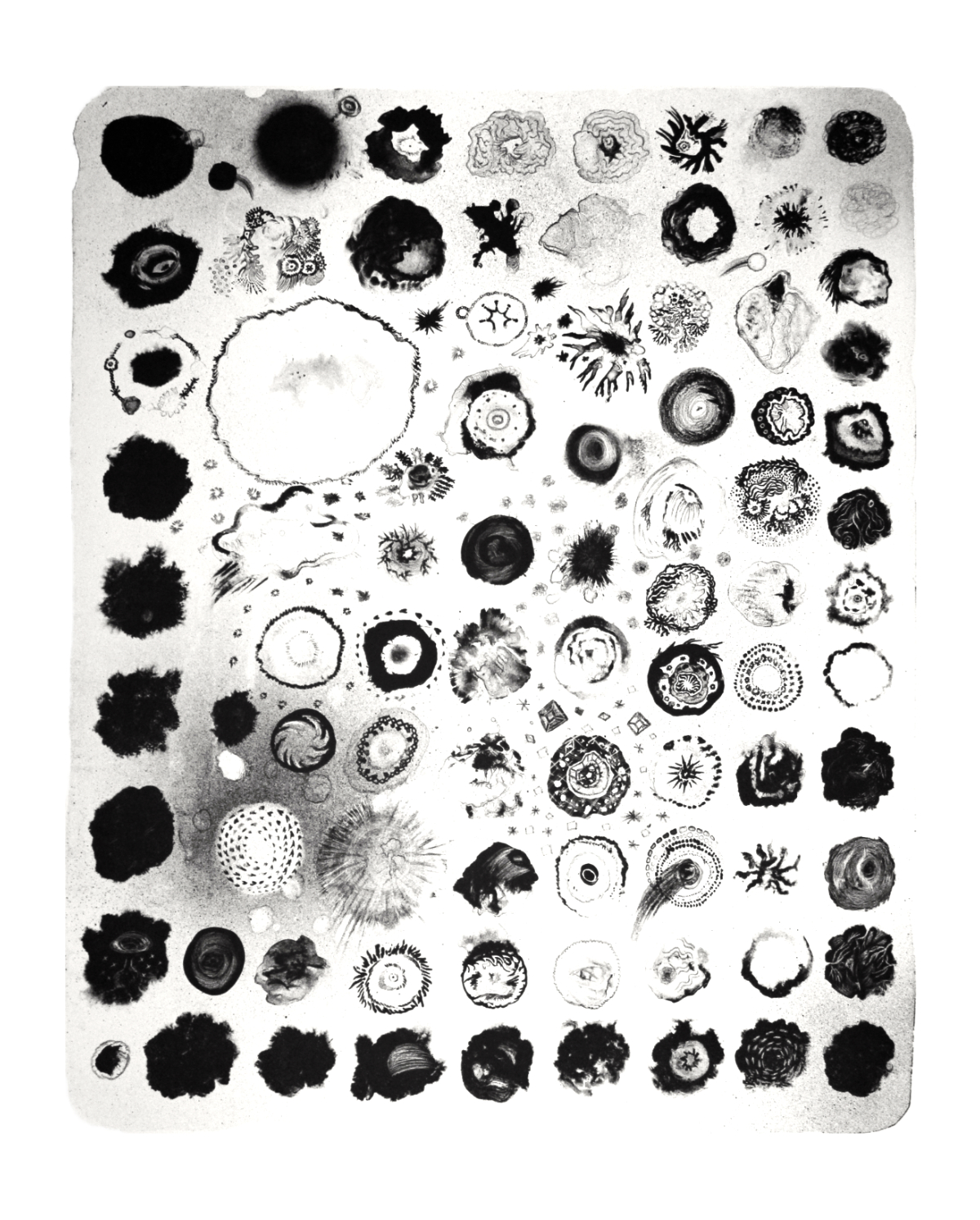
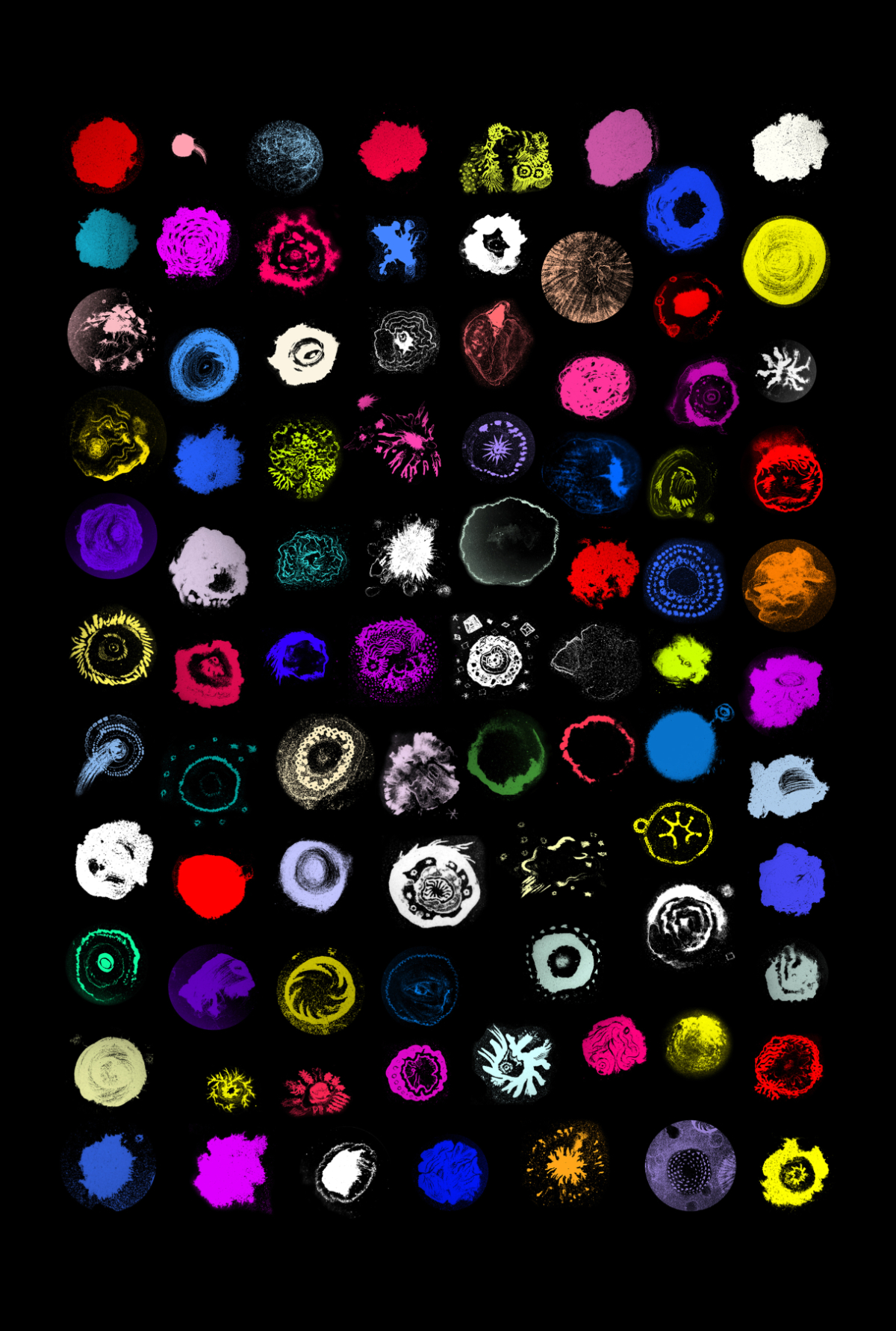
-
1. Adoka Niitsu, Initial ALithograph, Arches 250g, 57cm x 76cm, Limited Edition of 10 + 13 AP, Signed and numbered by pencil by the artist, 2012.
Worked on the lithographic stone and printed at l'atelier IDEM Paris under support of The Ōki Foundation. Public Collection: BnF The National Library of France, Paris.2. Adoka Niitsu, Initial A'Digital image data Open edition, Size variable, Color changeable, Support changeable, 2012
Initial A is Niitsu's first lithographic print in her research project at a historical print shop called Atelier IDEM in Paris.
For her initial foray into lithography, Niitsu utilizes an ink wash technique to create her spontaneous patterns on the limestone. This allows her to establish a dialogue with the uniqueness of each individual stone.
The print shop Atelier IDEM has used the same lithographic limestones and printing presses for over 100 years. At this atelier, she learned that invention of the lithography was the starting point of the reproducible image and mass media.
Whereas, Initial A'(dash) is an artwork that was scanned and created from the image of lithography Initial A. It will exist in several different forms such as prints, video animation and installation work.

-
Adoka Niitsu, Initial A'Printed on premium photo paper (250g), glued behind a Plexiglas panel (2mm) and reinforced with Alu-Dibond (3mm). 42 cm (11.7 x 16.5 inch). External dimensions: 34.3 x 46.6 cm (13.5 x 18.3 inch), 2022
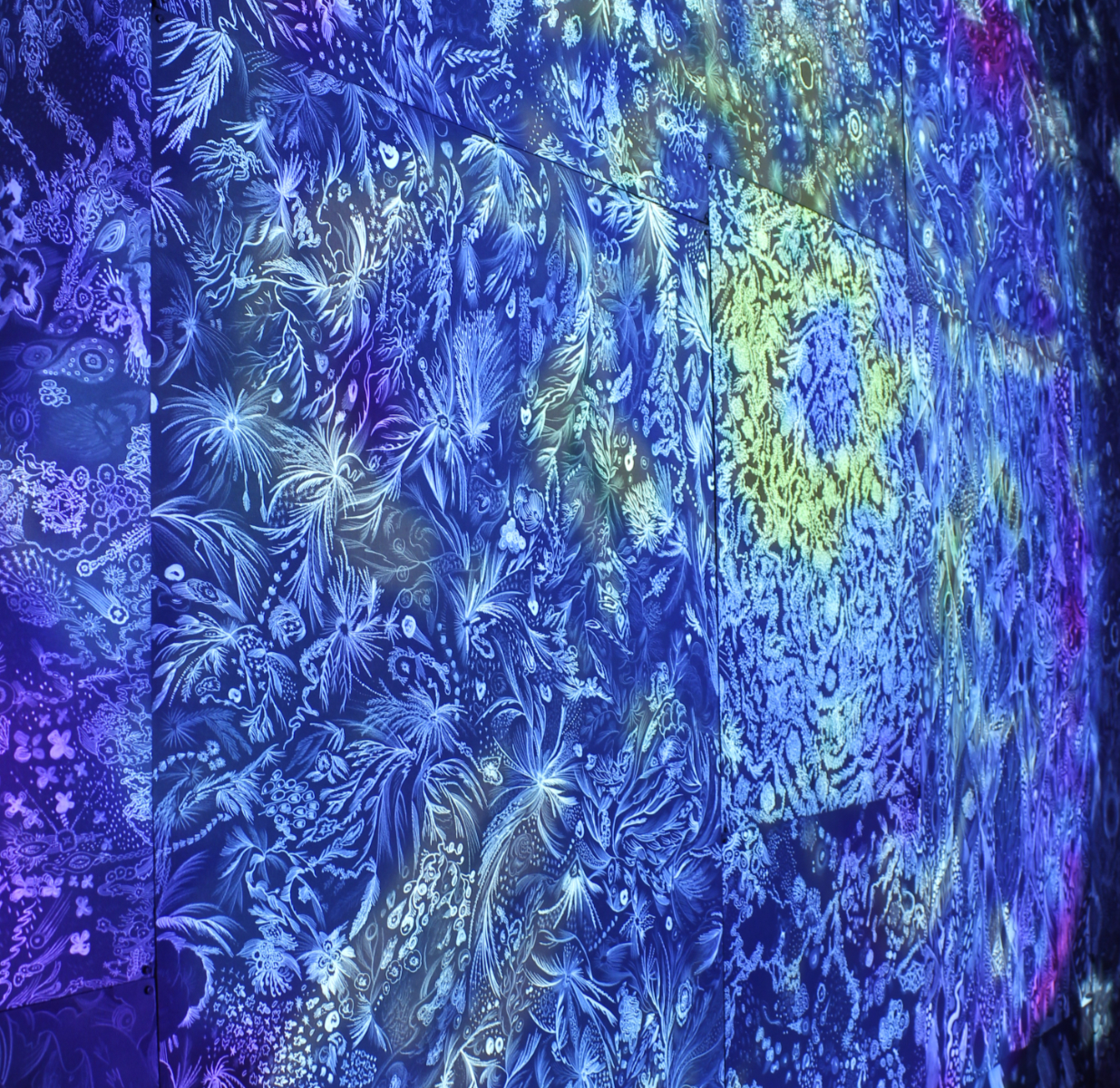
-
Adoka Niitsu, Le PiafferInstallation view, Animation Initial A', Video Projection on Drawings, 2012.
-

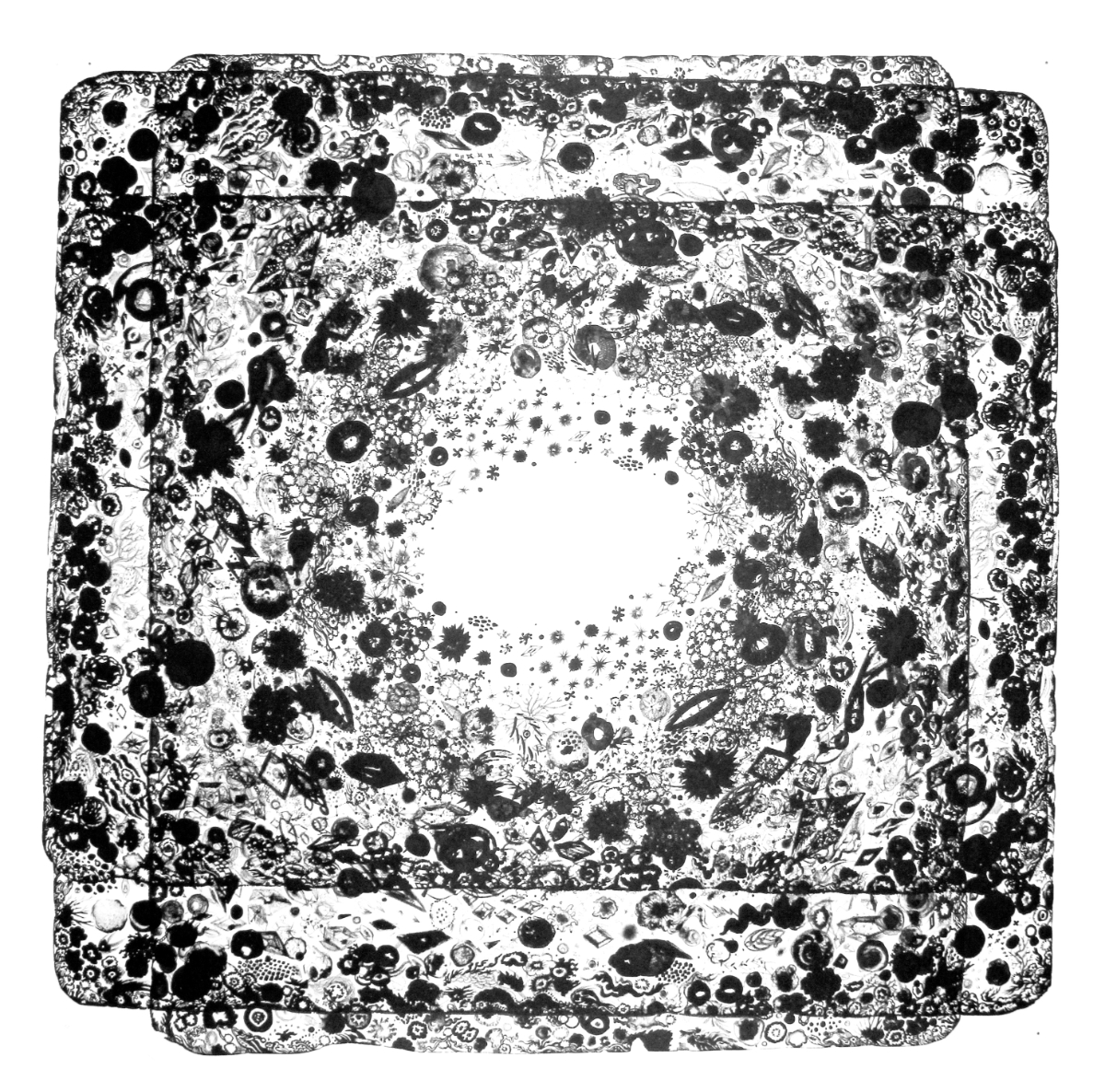
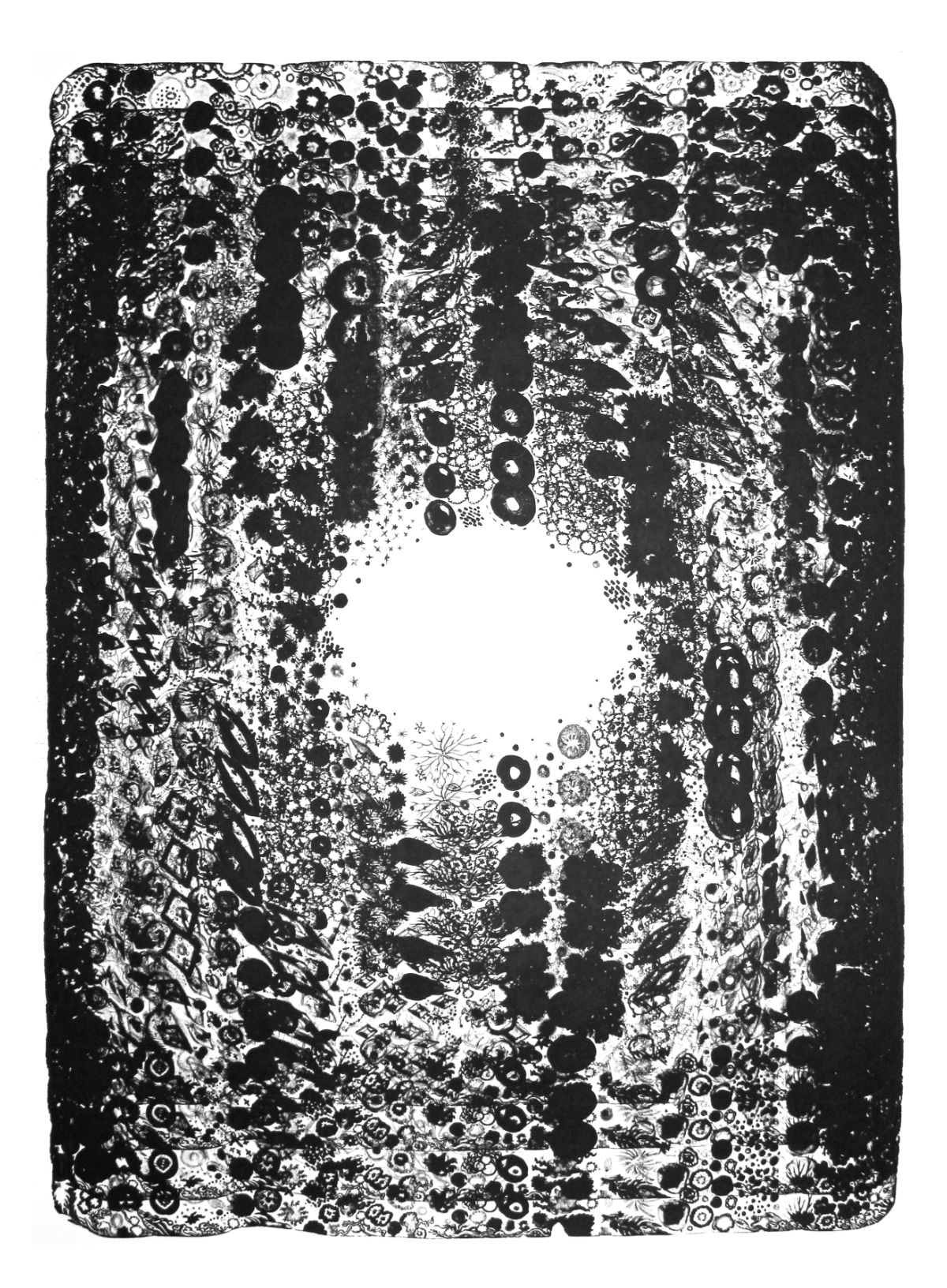
-
Adoka Niitsu, The PhoenixA Series of Lithographs, BFK Rives. Each Unique print, 2012.
Worked on the lithographic stone and printed at l'atelier IDEM Paris under support of The Ōki Foundation.
The lithography is a printing technique using limestone. After printing is finished, the stone plate is polished and used by another artists.
Inspired from this process and materiality of such stone prints, the concept of imaginary creatures "The Phoenix"(fire bird) came to Niitsu's mind.
The Phoenix will burn their own body once in 100 years and lives forever by resurrection. The Phoenix has been portrayed as legend and inspiration in ancient times east and west, in Egypt, Persia, Greece, China, Russia, etc., in also for an artistic creation such as an Japanese manga artist Tezuka Osamu's manga "Hinotori"(Fire bird) and the ballet of Stravinsky. The Phoenix is expressed as images repeatedly reproduced, beyond the transformation medium. In other words, we can consider The Phoenix is a fantasy existance on various media.
Instead of illustrating a "phoenix," Niitsu drew inspiration from the marine life and various crystal forms of calcium carbonate (CaCO3) found in limestone to create a more organic, abstract image that expresses the concept of the cycle of life.
-
Adoka Niitsu, The PhoenixInstallation view, Video Projection on Lithographies, 2012


-
Adoka Niitsu, The Pages of the Book of the EarthA Series of Photographs of the Solnhofen Limestone. From the research trip in Solnhofen, Germany, 2012 ©Adoka Niitsu
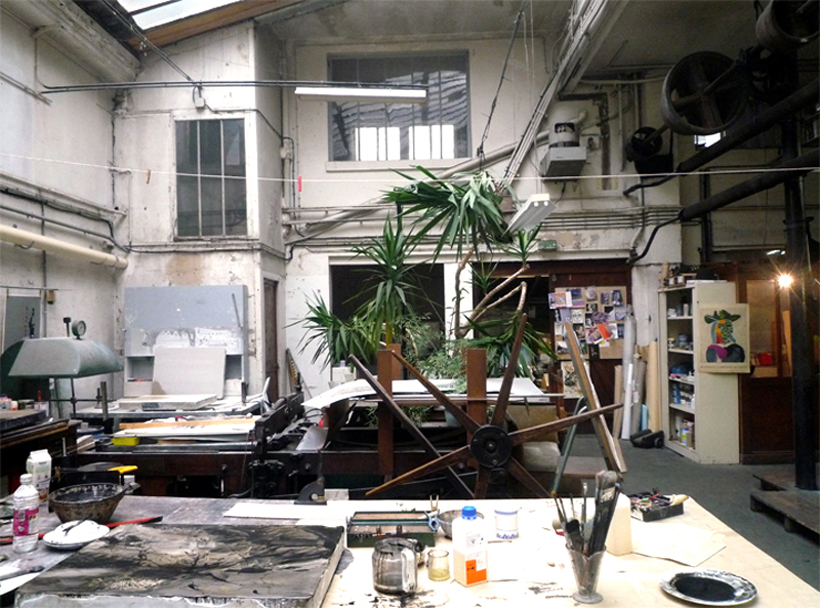
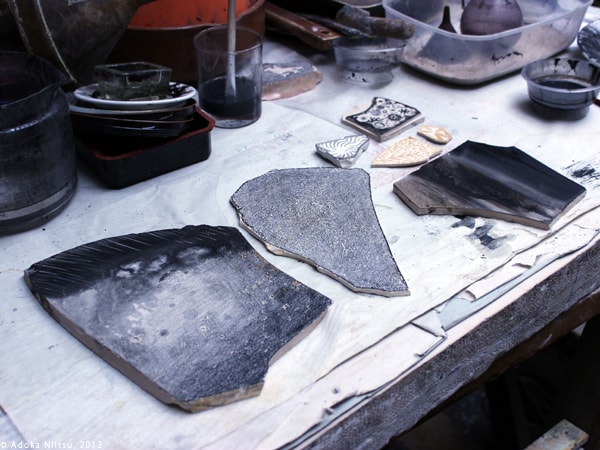


-
Adoka Niitsu, Chez IdemExperimental process of lithography using limestone collected by the artist in Solnhofen, Germany. Photo at Lithography Print Studio Atelier IDEM, Paris, 2013.

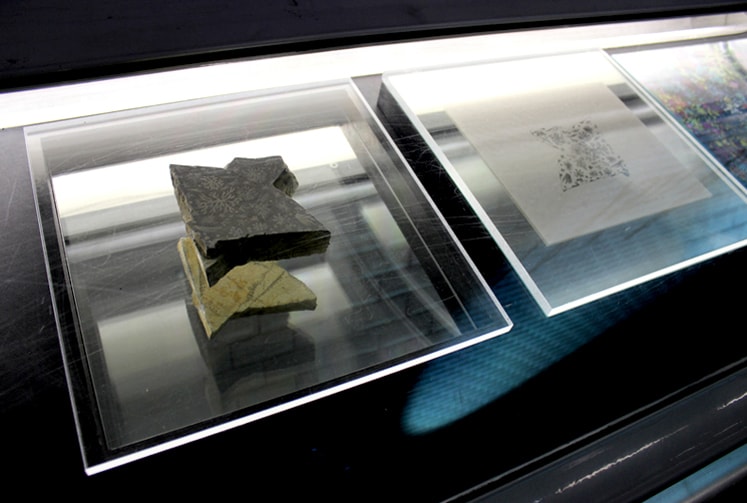
-
Adoka Niitsu, The Stone said:, 2013Installation view of exhibition "GREEN SPACE - Le jardin souterrain" at Saint-Germain-des-Prés Métro station, Paris. *Curator: Barbara NEMITZ (Artist and Professor Bauhaus-University Weimar, Germany), Artists include : Barbara Nemitz, Michel Blazy, Julien Bouillon, Ritsuko Taho.
Piece of lithographic limestone from Solnhofen, Germany, Stone size 10.5 x 11cm, Lithography on Japanese paper, Printed at IDEM Paris. Box size 30 x 30 cm : Mirror, Acrylic plate, 2013 -
29th August 2012
Where does it come from? After having experience in making lithography work, I could not stop thinking about the material of lithography - limestone. I learned that best quality stone plate was from Solnhofen, in Germany. I subsequently needed to go to see the birthplace, the source.
30th August 2012
The Strata from Upper Jurassic eras was so beautiful. I put chisel to the stone and hit by hammer, the layer of stone was peeled like a turning the page of book of history of the earth. Each fragment of stones were including many different fossils and telling their story of life from 145 million years ago. I discovered that limestone was already a media which keeps and transfer images. Thanks to the help of my friend, who has a driver’s license, I was able to bring back many stones in my suitcase.
18th February 2013
I started experimenting with making lithographic prints using limestone from my trip. Polishing smoothly, drawing on the surface… it was like a dialogue and collaboration with each small stone.
Ⅰ
Series of Drawings 550 x 225cm, Projector, DVD Player, 2012.
Ⅱ
